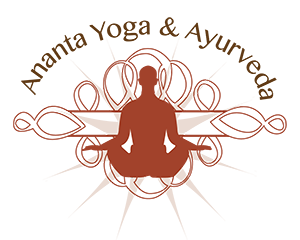What is Yoga? – by Liz Richards
What is Yoga?
“yogasgcittavrttinirodhah“
“Yoga is the ability to direct the mind exclusively toward an object and sustain that direction without any distractions”
In ancient times, the desire for greater personal freedom, health, longevity of life, heightened self awareness and understanding, gave birth to the beautiful system of physical and mental exercise – Yoga – which has since spread throughout the world. The word Yoga, from the Sanskrit word “Yuj”, means to “yoke, bind or join together” and when practiced with awareness, integrity and respect brings the mind, body and spirit together into one harmonious experience.
On a deeper level the traditional acceptance is that Yoga means the union also of the Jivatman and Paramatman, or Atman and Brahman, that is the union of one’s Individual Consciousness and the Universal Consciousness.
No one knows exactly when Yoga began, but it certainly pre-dates written history. Stone carvings depicting figures in Yoga positions have been found in archaeological sites in Indus valley dating back 5000 years or more. As one of the six darsanas or Indian philosophical schools, Yoga has its origins in the Vedas, the oldest record of Indian culture. The Indian sage and scholar Patanjali is believed to have collated the practice of yoga into the Yoga Sutra or “Yoga Aphorisms”, as early as the 1st and 2ndcentury B.C. or as late as the 5th century – the exact dates are unknown.
Patanjali’s Yoga Sutras are a collection of 195 statements that serve as a philosophical guide book for most of the Yoga that is practiced today and it is to him that we must be eternally grateful. According to the Sutras of Patanjali, the ultimate aim of Yoga is to reach “Kaivalya” (emancipation or ultimate freedom). This is the experience of one’s innermost being or “soul” (the Purusa). Then one becomes free of the chains of cause and effect (Karma) which tie us to continual reincarnation. In Kaivalya, one is said to exist in peace and tranquility, having obtained absolute knowledge of the difference between the spiritual which is timeless, unchanging and free of sorrows, and the material which is not. This is considered desirable as life is presented as ultimately full of sorrow and pain – even pleasure and joy leave pain and loss when they are gone as nothing in the material world is permanent. Yoga is therefore a spiritual quest. However along the path of Yoga, the practitioner also gains health, happiness, tranquility and knowledge which are indicators of progress and an encouragement to continue their practice.
The system on which the Sutras are based is known as “ashtanga Yoga”, or the eight limbs of Yoga – “ash” meaning eight and “anga” meaning limbs in Sanskrit. This is what is generally referred to as Classical Yoga.
All forms of yoga taught throughout the world which are based on the eight limbed system are considered classical forms of yoga. These include Hatha, Iyengar, Vinyasa Flow and Ashtanga.
The eight steps of Classical Yoga are
(1) Yama – Most commonly translated as the “rules of social behaviour” and also meaning “restraint” . These codes of behaviour are universal guidelines for engaging with others.
They include
- Ahimsa – refraining from violence
- Satya – truthfulness
- Asteya – honesty
- Brahmacarya – exercising appropriate sexual control but rejoicing in the healthy expression of sexual energy
- Aparigraha – generosity in every thought word and action without attachment to any outcome (aparigraha). These restraints are what enable us to be in this world and live in harmony with others and the environment.
(2) Niyama – Traditionally interpreted as the “rules of personal behaviour” or “observances”. We see them as the qualities naturally expressed in an evolutionary personality.
The Niyamas of yoga encourage –
- Saucha – (purity) -choosing experiences that are nourishing and cleansing to your body, mind and soul.
- Santosha – (contentment) – reflecting a state of being in which your peace is independent of situations and circumstances happening around you.
- Tapas – traditionally translated as “discipline” or “austerity” the word tapas itself means “fire” – A healthy inner fire ignited by yoga asana practice and pranayama can metabolise all impurities.
- Svadhyaya – (study and remembrance). These observances relate to our inner study and experience of life and our ability to achieve our true potential on every level.
- Ishwara-Pranidhana- Often translated as “faith” or “surrendering to God” Ishwara is the personalised aspect of the Infinite or surrendering to the wisdom of uncertainty.
(3) Asana – Translated as, “ postures”, “seat” or “position”- refers to the practice of the program of physical postures designed to purify the body and improve physical strength and stamina. “To expand the mind first the body must be challenged”. The practice of yoga asana is a tool we are given to build heat, purify the body and clear blockages on a physical, emotional and energetic level. This practice helps to free us from the fluctuations of the mind or “Citta Vritti” in order to induce meditation and eventually attain emancipation from pain and suffering. Performing asanas with full awareness is practice for performing action in life with awareness. This third limb is where most Yoga practitioner’s journey begin.
(4) Pranayama, meaning, “breathing techniques” or “breath control” – this limb involves the use of specific breathing techniques. Prana is lifeforce. It is the essential energy that animates inert matter into living, evolving biological beings. When prana is flowing freely throughout the body/mind you will feel healthy and vibrant. When prana is blocked, fatigue and disease will follow. According to Patanjali, a key way to enliven prana is through conscious breathing techniques – Prananyama. The breath is the link between body and mind and together with “drishti”, (focal points) and “mudras” (gestures) in asana practice takes us to the next limb of yoga.
(5) Pratyahara – means “withdrawal of the senses”. It is the process of directing the senses inward to become aware of the subtle elements (tanmatras) of sound, touch, sight, taste and smell. Patanjali encourages us to take time withdrawing our senses from the world to hear our inner voice more clearly. When your senses are withdrawn for a time, you are able to tune into the more subtle tastes and smells. Yoga suggests that it is true for all our experiences in the world. If we take time to withdraw from the world for a little while, we will find that our experiences are more vibrant. The state of Pratyahara prepares the mind for meditation.
(6) Dharana – means “concentration”. It is the mastery of attention and intention. Whatever we place our attention on grows in importance to us. The object of our attention is enlivened by our awareness and becomes a more predominant force in our lives. An essential component of yoga is refining our attention in order to facilitate healing and transformation in both the body and mind. By becoming clear about what our intentions in life are and directing our attention completely to them we see them actualise in our lives.
(7) Dhyana – meaning “meditation”, is the development of witnessing awareness where we now have the ability to focus on one thing (or nothing) indefinitely and are becoming completely absorbed and immersed. It is the cultivation of our awareness so that in the midst of the only constant in life – perpetual change – we do not lose ourselves in the objects of our experience. Although situations, circumstances, people and things are ever changing in our lives, the aspect of us that is witnessing these changes is the essence of our being – our soul.
(8) Samadhi – “absorption” is the realization of the essential nature of the self – eternal bliss. It is the state of being settled in pure unbounded awareness. Going beyond time and space, beyond past and future, beyond individuality. It is a state of being in which fear and anxiety do not arise. The eighth limb is one which we may never achieve in this life time but remains the ultimate goal.
The tradition of Yoga has always been passed on individually from teacher to student through oral teaching and practical demonstration. The formal techniques that are now known as Yoga are, therefore, based on the collective experiences of many individuals over many thousands of years. The particular manner in which the techniques are taught and practiced today depends on the approach passed down through the lineage of teachers supporting the individual practitioner.
While there are many different schools of Yoga, most current adherents practice some variation of Patanjali’s system. It is a well thought out, tried and tested system for living based on three main structures or the 3rd, 4th and 5th limbs – exercising, breathing and meditation.
Yoga is not a Religion. It has no creed or fixed set of beliefs, nor is there a prescribed, god-like figure to be worshipped in a particular manner. Religions generally are based upon the belief in and worship of things (God or god-like figures) that exist outside one’s self. The core of Yoga’s philosophy is that everything is supplied from within the individual, therefore there is no dependence on an external figure, either in the sense of a person or god figure, or a religious organisation. The common belief that Yoga derives from Hinduism is a misconception. Yoga actually predates Hinduism by many centuries. However, the techniques of Yoga have been adopted by Hinduism as well as by other world religions.
Yoga is a system of techniques that can be used for a number of goals, from simply managing stress more efficiently, learning to relax, improving general health and increasing strength and flexibility all the way to becoming more self-aware and acquiring the deepest knowledge of ones’ own self. Therefore those with deep religious convictions need not fear or be suspicious of the system of Yoga but can embrace it. The practice of Yoga will not interfere with any religion but rather should enhance the overall experience of life and the ability to be happy and balanced without causing conflict or turmoil in relation to personal religious beliefs.
by Liz Richards


